Guide to Vancouver to Banff Road Trip
Embarking on a Vancouver to Banff Road Trip is like stepping into a canvas painted with nature’s finest brushstrokes. As I rolled out of the bustling streets of Vancouver, a sense of anticipation tingled in my veins. The route ahead promised stunning vistas, hidden gems, and unforgettable memories.
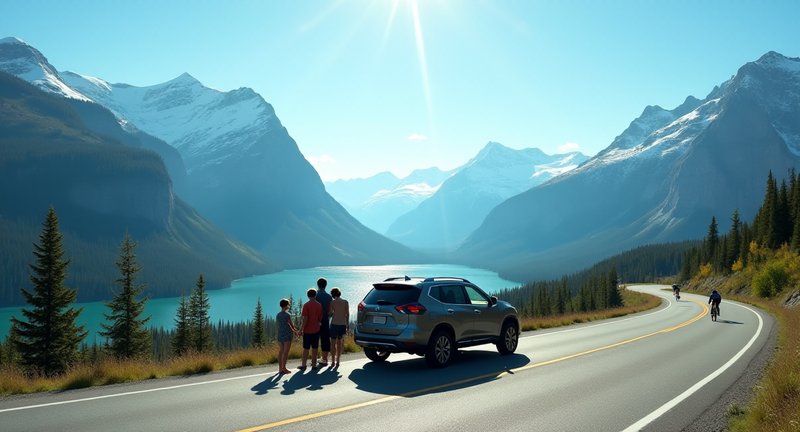
Here’s a glimpse of what to expect on this epic journey:
-
Majestic Mountains: The drive takes you through the heart of the Canadian Rockies. Picture snow-capped peaks towering over lush forests. It’s like nature is showing off, and you’re invited to witness the spectacle.
-
Breathtaking Stops: Don’t rush! Make time for these must-see spots:
- Harrison Hot Springs: A delightful pit stop for relaxation. Soak in the warm mineral waters while taking in mountain views.
- Coquihalla Pass: This stretch offers a dramatic landscape that’s perfect for those Instagram-worthy shots.
- Yoho National Park: Home to the stunning Emerald Lake and the towering Takakkaw Falls. Trust me, your camera will love you for this!
-
Local Delights: Savor the flavors of the Pacific Northwest! Stop by local markets or quaint cafes for a bite. The fresh salmon and artisan cheeses are simply to die for.
-
Wildlife Wonders: Keep your eyes peeled! On this route, you might encounter elk, bears, or even the elusive moose. Just remember, respect their space and enjoy the view from a safe distance.
Taking the plunge into a Journey from vancouver to banff is not just about the destination; it’s about the journey, the stories, and the beauty you encounter along the way. So buckle up and get ready for an adventure of a lifetime!
The Excitement of Vancouver to Banff Road Trip
Embarking on a journey from the vibrant streets of Vancouver to the breathtaking landscapes of Banff is nothing short of exhilarating. As I drove along the scenic highways, I felt a rush of excitement that only a road trip can ignite. The lush green forests and majestic mountains danced by my window, making every mile a feast for the eyes.
One of the highlights of this adventure is the diverse array of sights and experiences along the way. Here are some must-see stops that transformed my drive into a memorable escapade:
- Harrison Hot Springs: A quaint village where you can soak in natural mineral pools surrounded by stunning mountain views.
- Hope: Known for its stunning landscapes and the iconic Hope Slide, a reminder of nature’s power.
- Manning Provincial Park: A paradise for outdoor enthusiasts, with hiking trails that meander through wildflower meadows and dense forests.
As I approached the Rockies, the air became crisper, and the landscape morphed into a dramatic tableau of towering peaks and shimmering lakes. I recommend taking a moment to breathe it all in, perhaps at the viewpoint over Peyto Lake the turquoise waters are a sight you won’t forget.
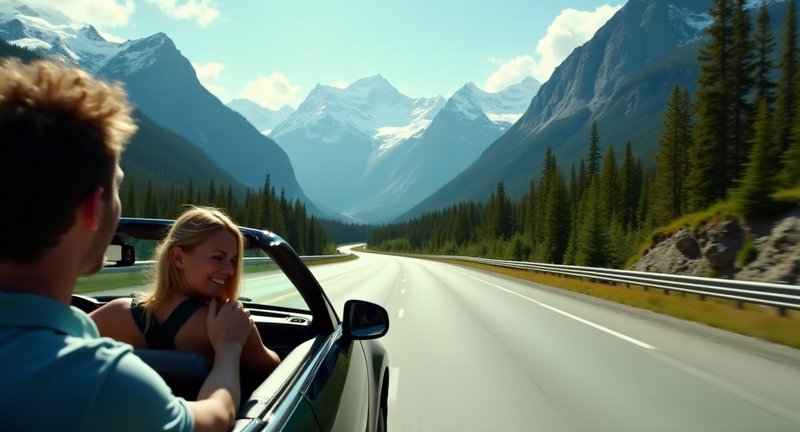
In the heart of Banff, prepare to be mesmerized by the charm of the town, complete with quaint shops and delightful eateries. Trust me, the poutine is a must-try!
The entire experience left me feeling refreshed and connected to nature, a reminder that the journey is just as thrilling as the destination. So pack your bags, roll down the windows, and let the adventure begin!
Best Times to Drive from Vancouver to Banff
When planning a journey from the bustling streets of Vancouver to the breathtaking landscapes of Banff, timing is everything. Having made this trek myself, I can confidently say that choosing the best times to embark on this adventure can elevate your experience to new heights. Here’s what I’ve learned:
Ideal Seasons for the Drive
-
Spring (April to June)
- Vibrant Blooms: Witness the explosion of wildflowers as you traverse the scenic routes.
- Fewer Crowds: Enjoy the tranquility of less trafficked roads, perfect for taking in the stunning vistas.
-
Summer (July to August)
- Longer Days: With daylight stretching late into the evening, you have ample time to explore.
- Activities Galore: From hiking to rafting, summer is packed with opportunities for adventure.
- Beware the Crowds: Prepare for busier highways, especially on weekends.
-
Fall (September to October)
- Autumn Colors: The foliage transforms into a palette of reds and golds, creating a picturesque backdrop.
- Milder Weather: Enjoy a pleasant climate without the sweltering heat, ideal for road-side picnics.
-
Winter (November to March)
- Winter Wonderland: If you’re a snow lover, the landscape becomes a frosty paradise, perfect for skiing and snowshoeing.
- Less Traffic: The roads are quieter, providing a serene driving experience amidst the snow-covered terrain.
Also, the best time to make this journey depends on what experiences you seek. Whether you prefer blooming flowers, sunny skies, or snowy landscapes, there’s a perfect time waiting for you. Grab your camera and prepare for an unforgettable ride!
Scenic Routes from Vancouver to Banff
Traveling from Vancouver to Banff offers some of the most breathtaking scenery you’ll ever lay eyes on. The winding roads carve through towering mountains, lush forests, and sparkling lakes, inviting you to take in the majesty of nature at every turn. Here are some unforgettable stops along the way that I discovered during my journey:
-
Sea to Sky Highway: As you leave Vancouver, the Sea to Sky Highway presents a stunning coastal view, with dramatic cliffs meeting the azure waters of Howe Sound. Don’t miss the chance to stop at the iconic Shannon Falls the sight of cascading water is nothing short of mesmerizing.
-
Whistler: This world-renowned ski resort isn’t just for winter sports enthusiasts. In summer, it transforms into a haven for hikers and mountain bikers. Grab a bite in the village, where the atmosphere buzzes with life, or take the Peak 2 Peak Gondola for unparalleled views.
-
Pemberton Valley: As you meander through this picturesque valley, the sight of sprawling farms and snow-capped peaks is captivating. Consider a detour to explore local farms and enjoy some fresh produce.
-
Mount Robson Provincial Park: Here lies the majestic Mount Robson, the highest peak in the Canadian Rockies. A short hike to Kinney Lake rewards you with stunning reflections of the mountain in the serene waters.
-
Jasper National Park: Although slightly off the direct path, Jasper’s stunning landscapes and wildlife encounters are well worth the detour. Take a stroll along Maligne Lake or embark on a thrilling white-water rafting adventure.
The journey is as much about the destination as it is about the moments you create along the way. Every twist and turn offers a new spectacle, making the drive an adventure in itself. So buckle up, roll down the windows, and let the beauty of this route take your breath away!
Essential Stops Along the Journey
In relation to epic road adventures, some routes simply beckon with the promise of breathtaking landscapes and hidden gems. Trust me; the journey from the vibrant pulse of the city to the serene embrace of the mountains is nothing short of magical. Here are some essential stops along the way that you absolutely cannot miss:
-
Hope: This charming town, often overlooked, is a canvas of stunning scenery. Grab a coffee at a local cafe and stroll along the riverfront. The towering mountains will serve as your backdrop, setting the tone for what’s to come.
-
Manning Provincial Park: If you have a soft spot for nature, this is a must-stop. From hiking trails that wind through lush forests to tranquil lakes, it’s a paradise for outdoor enthusiasts. Don’t forget your camera; those Instagram shots will be nothing short of legendary!
-
Pemberton: Often overshadowed by its famous neighbor Whistler, Pemberton is a gem in its own right. Enjoy farm-to-table dining at a local restaurant and savor the flavors of the region. The drive here is also dotted with breathtaking views of the majestic mountains.
-
Yoho National Park: If time permits, venture off the beaten path into this stunning park. Emerald Lake is nothing short of a dream, with its turquoise waters reflecting the surrounding peaks. Take a moment to breathe it all in; it’s these little pauses that make the journey memorable.
-
Canmore: As you near your destination, Canmore welcomes you with open arms. This town feels like a warm hug, with its quaint shops and vibrant art scene. Take a leisurely stroll, perhaps indulge in a little souvenir shopping, or treat yourself to a local craft brew.
Each stop along this journey is a chapter waiting to be written. So, buckle up and prepare for an unforgettable adventure that will fill your heart and camera roll with beautiful memories!
Packing Essentials for Your Adventure
Packing for an adventure is like orchestrating a symphony of essentials. Each item plays a crucial role, harmonizing to create an unforgettable experience.
First, consider your clothing. I always opt for layers; the weather can be as unpredictable as a cat on a hot tin roof. A light jacket is a must, as it can transform a sweltering day into a cozy evening under the stars.
Next, don’t skimp on the footwear. Trust me, a good pair of hiking boots can be the difference between a blissful trek and a torturous slog. I remember a time when my sneakers let me down; never again will I underestimate the power of sturdy soles!
Then there’s the ever-important gear. I can’t stress enough how crucial it is to have a reliable backpack. It’s your lifeline, holding your water, snacks, and all those little odds and ends that somehow accumulate. A well-organized bag can save you from rummaging around like a squirrel searching for acorns.
Let’s not forget the tech. A power bank has become my best friend on long journeys. Whether snapping pictures or navigating through hidden gems, staying charged keeps the adventure alive and kicking.
As a matter of fact, I always pack a few comforts from home. A cozy blanket or my favorite book can add a sprinkle of joy to those quiet moments under the open sky. Remember, it’s the little things that can turn a good trip into a great one.
So, as you prepare for your next escapade, think beyond the ordinary. Choose wisely, pack smart, and let the adventure unfold!
Choosing the Right Vehicle for the Trip
Choosing the right vehicle for the trip can make or break your adventure. When I set out on my Vancouver to Banff Road Trip, I knew my choice of wheels would significantly impact the experience.
Imagine cruising through breathtaking landscapes, the wind tousling your hair, and your favorite playlist providing the soundtrack. A reliable vehicle is your ticket to freedom, allowing you to explore hidden gems along the way.
For my journey, I opted for a sturdy SUV. The spacious interior accommodated my gear and offered a comfortable ride on the winding mountain roads. Trust me; you’ll want ample room for all those stunning photographs you’ll be taking!
Consider your travel companions too. If you’re hitting the road solo, a compact car might do the trick. But with friends or family, go for something roomier after all, laughter is contagious, and it’s best shared in close quarters.
Don’t forget about the weather. The Pacific Northwest can surprise you, so choose a vehicle that handles various conditions. An all-wheel-drive option proved invaluable as I navigated through rain and sunshine.
As a matter of fact, think about fuel efficiency. The last thing you want is to be chained to the gas pump instead of soaking in the scenery. Finding that perfect balance between comfort and economy can enhance your road trip experience.
In the end, selecting the right vehicle transforms your Journey from vancouver to banff into a journey of discovery and joy.
Accommodation Options on the Route
When you embark on a journey through the breathtaking landscapes of the Canadian Rockies, the choice of accommodation can significantly enhance your experience. Having traveled along this scenic route, I discovered a plethora of options that cater to every type of traveler. Here’s a little insight into what you might consider:
1. Cozy Cabins
Nothing beats the charm of staying in a rustic cabin nestled in the woods. Imagine waking up to the sounds of chirping birds and the scent of pine. Many cabins come with modern amenities and picturesque views, making them a perfect base for exploring the great outdoors.
2. Luxury Resorts
If indulgence is what you’re after, luxury resorts offer an array of pampering experiences. From spas to fine dining, these places ensure you feel like royalty after a day of hiking or sightseeing. Plus, the backdrop of towering mountains adds a touch of magic.
3. Campsites
For the adventurous souls, camping under the stars can be a truly unforgettable experience. Many campsites along the way provide breathtaking views and a chance to connect with nature. Just pack your gear and be ready for some cozy campfire stories!
4. Boutique Hotels
If you’re seeking a unique atmosphere, boutique hotels along the route can offer an eclectic mix of style and comfort. With personalized service and local charm, these establishments often showcase the culture and history of the area.
5. Charming Bed and Breakfasts
There’s something wonderfully quaint about bed and breakfasts. Sharing breakfast with fellow travelers while enjoying homemade dishes is a delightful way to start your day before heading out on your adventures.
Each accommodation type brings its own flavor to the journey, and the right choice can transform your travel experience into something truly memorable. So whether you’re looking for luxury or rustic simplicity, there’s something for everyone on this captivating route.
Outdoor Activities Near Banff
Exploring the great outdoors near Banff is like diving into a vivid painting, where every brushstroke captures the breathtaking beauty of nature. From my own escapades, I’ve found that the wild offers a playground for both the adventurous and the contemplative.
One of my favorite activities is hiking through the lush trails that weave through the mountains. There’s something magical about feeling the cool breeze on my face while surrounded by towering pines and the sound of distant waterfalls. Each step reveals a new view, reminding me of nature’s grandeur.
If you’re a fan of a little adrenaline, consider trying rock climbing. The rugged cliffs around Banff call out to thrill-seekers, offering routes for various skill levels. Trust me, there’s nothing quite like reaching the summit and taking in a panoramic view that stretches as far as the eye can see.
For those who prefer a more tranquil experience, kayaking on one of the pristine lakes is pure bliss. Gliding across the glassy surface, I’ve often spotted reflections of the surrounding peaks. It’s a serene moment that invites a deep breath and a smile.
Don’t forget about the wildlife! Keep your eyes peeled for elk and bears as you explore the area. The thrill of spotting these magnificent creatures in their natural habitat adds an exhilarating layer to every outing.
In short, the outdoor activities near Banff are a context of adventure and tranquility. Each experience invites you to connect with nature in a way that feels both refreshing and transformative.
Must-See Attractions in Banff National Park
Banff National Park, nestled in the heart of the Canadian Rockies, is more than just a postcard-worthy destination it’s a place that demands to be experienced firsthand. From towering peaks to crystal-clear lakes, it feels like stepping into a natural dreamscape. Here are some must-see spots that will make your trip unforgettable.
-
Lake Louise: You’ve likely seen the iconic images of this turquoise gem surrounded by snow-capped mountains, but standing at its edge? That’s when the magic happens. Take a canoe out on the water, or if you’re feeling adventurous, hike up to the Lake Agnes Tea House for a refreshing drink with a view.
-
Moraine Lake: Often overshadowed by its more famous neighbor, this is one of those places that will stop you in your tracks. The ten jagged peaks reflecting in the water make it a serene spot for an early morning visit. I recommend catching the sunrise here it’s like watching the world wake up.
-
Johnston Canyon: Walk the catwalks suspended above the rushing waters and follow the trail to two spectacular waterfalls. During winter, the entire place transforms into a frozen wonderland with ice-blue falls and icy trails that make for an otherworldly trek.
-
Sulphur Mountain: Take the gondola up, or if you’re up for it, hike to the top. Either way, the view from above is unbeatable. Once you’re at the summit, it’s like standing on top of the world with sweeping views of the Bow Valley.
Whether you’re chasing hidden waterfalls or standing in awe of the Rockies, Banff offers so many spots that will capture your heart and leave you longing to come back.
A Thorough Examination of Vancouver to Banff Road Trip
The journey from the bustling streets of Vancouver to the rugged beauty of Banff is nothing short of a transformation. I’ve taken this drive more times than I can count, and let me tell you, it’s not just about the destination – it’s about soaking in the soul of each turn and stop along the way.
Starting out, you’ll cruise through the lush landscapes of the Fraser Valley, with endless stretches of farmland and gentle rolling hills. As you get deeper into the wilderness, the mountains start to rise like ancient guardians welcoming you into their realm. The sheer scale of the Coastal Mountains never fails to humble me.
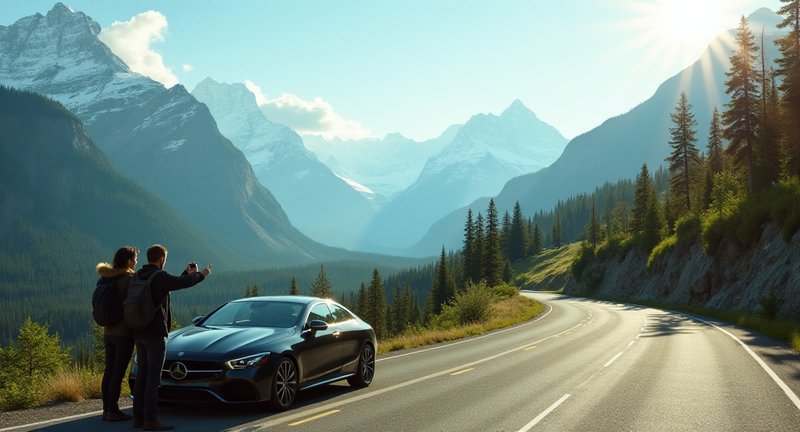
Some must-see stops along the way include:
- Hope: Famous for its chainsaw carvings and gateway to the Coquihalla Highway.
- Kamloops: This desert-like town offers a nice break with cozy coffee shops and scenic river views.
- Revelstoke: Tucked at the foot of towering mountains, this charming stop offers some of the best hiking spots.
- Glacier National Park: It feels like stepping into a postcard – the towering peaks and dense forests make it one of the most scenic portions of the trip.
As you weave through the Columbia Mountains, the air shifts – crisper, cleaner, and somehow more alive. You’ll cross stunning bridges, drive through mountain passes, and witness glaciers that seem to appear out of nowhere. By the time you roll into Banff, it feels like you’ve not just traveled miles, but leaped through worlds.
Trust me, this drive is an experience you won’t forget anytime soon.
Tips for Driving in Mountain Terrain
Navigating mountain terrain demands more than just attention; it’s a dance with nature itself. There’s something about those winding roads that invite you into their rhythm, but don’t be fooled by the beauty. I’ve learned that driving in the mountains is a lesson in patience and preparation.
One golden rule always respect the elevation. As you climb higher, expect your vehicle to work harder, and your ears might remind you of just how high you’re going. Shift to lower gears when needed, especially on steep ascents and descents. It saves your brakes and helps you stay in control.
Weather is another unpredictable guest in the mountains. You could be basking in sunlight one moment and greeted by fog or rain the next. Keep an eye on your dashboard for changing tire pressure as the altitude shifts. And yes, pack a pair of sunglasses not just for the style points but because the glare off mountain snow can be blinding.
In some spots, guardrails feel like mere suggestions, so I always stick to my lane and stay alert for vehicles that might hug the road a little too tight. If you’re new to this, frequent pull-offs let you pause and admire the scenery trust me, the views are worth it.
And, if you ever feel the pressure building up as the roads seem to narrow, just remember: take it slow. It’s not a race to the top, and sometimes the journey is the real destination.
Wildlife Spotting Opportunities
Wildlife watching on a road trip is like unlocking a hidden layer of the landscape. The journey through the wilderness, where nature surrounds you in every direction, offers unexpected moments of pure awe. One minute, you’re focused on the road, and the next, an elk strolls by like it owns the place.
I’ve found that mornings are the golden hour for spotting wildlife. As dawn breaks, bears are still wandering through the woods, foraging for their breakfast. The stillness in the air at that time creates a magical atmosphere almost as if nature is waking up with you.
If you’re lucky, you’ll catch glimpses of eagles soaring above, their wings slicing through the sky effortlessly. There’s something humbling about watching such majestic creatures in their natural habitat. I always find myself looking up, waiting for that familiar shadow to glide across the horizon.
Sometimes, it’s the quietest moments when wildlife comes to you. Deer peek out from the trees, eyes wide and alert, cautiously making their way across the road. You might even find yourself pulling over just to soak it all in. Trust me, these aren’t just fleeting moments they stay with you.
Whether you’re hoping to see mountain goats scaling cliffs or hoping for a wolf sighting in the distance, the thrill of wildlife spotting adds a new dimension to the journey. It’s a reminder that these lands belong to the animals as much as they belong to us.
Local Cuisine to Try on the Road
One of the best parts of any road trip is stopping to taste the local flavors. Whenever I’m exploring new areas, I always make a point to dig into dishes that truly reflect the culture and history of the region. If you’re open to some culinary adventure, the roadside stands and hidden eateries often reveal the heart of a place.
What I’ve discovered on these long drives is that food has a way of telling stories. You can learn more about a region’s traditions from a bowl of something hearty and homemade than from any museum stop. Whether it’s wild game specialties or a twist on a classic, it’s all part of the journey.
On my travels, I’ve savored tender bison burgers, devoured smoked trout fresh from icy waters, and once even tried a Saskatoon berry pie that I still dream about. Every stop offers a new flavor, a new experience to be savored – both for the palate and the soul.
Don’t rush past the small towns or roadside diners; this is where you find the real gems. Those quirky, off-the-beaten-path spots often serve up dishes passed down through generations. The warmth of a homemade meal in a place you never expected to stop is just another reward of hitting the open road.
So, when you’re out exploring, make sure to pull over for something you’ve never tried before. The best meals are the ones that surprise you, and nothing beats the satisfaction of discovering a local delicacy that’s not on any guidebook’s radar.
Budgeting for Your Journey
Budgeting for a journey can feel like a puzzle, but once the pieces come together, it all makes sense. The first rule I’ve learned is to set your budget before anything else. It sounds basic, but it changes the game entirely.
I always start by breaking down the costs into categories food, accommodation, transportation, and little extras for those spontaneous adventures. You never know when you’ll stumble upon a charming roadside cafe or a local craft market, and you’ll want a little wiggle room for those unexpected delights.
Accommodation is where a lot of people overspend without realizing it. Instead of booking the fanciest hotel, I always check out hostels, cozy B&Bs, or even campsites. Sometimes, pitching a tent under the stars beats the most luxurious hotel view.
As for meals, I prefer mixing it up some days, I’ll indulge in local cuisine, but on others, I’ll pack a picnic or whip up something simple. Honestly, grocery stores have become my best friend on the road. There’s something fun about cooking in a new place and saving a bit of cash while you’re at it.
Then, there’s the transportation piece of the puzzle. Gas, bus fares, bike rentals it all adds up faster than you think. The key is to plan your route carefully, but leave room for those random detours. After all, what’s a journey without a few surprises along the way?
Quick Answers
How many days is the road trip from Vancouver to Banff?
The road trip from Vancouver to Banff typically takes about 10 to 12 hours of driving, covering approximately 850 kilometers (530 miles). However, to fully enjoy the scenic beauty along the way and make some stopovers, it’s recommended to stretch the trip over 2 to 3 days. This allows travelers to experience the stunning landscapes, such as the Okanagan Valley and Glacier National Park, while also taking breaks to explore small towns along the route.
What is the road like from Vancouver to Banff?
The road from Vancouver to Banff is mostly paved and well-maintained, following the Trans-Canada Highway (Highway 1) for much of the journey. The route takes you through a variety of terrains, including mountains, forests, and valleys. The highway offers breathtaking views of the Canadian Rockies, but the winding sections through the mountains can be challenging, especially in winter when snow and ice are common. Summer provides a more relaxed drive with clear roads and stunning vistas.
What is the best way to get from Vancouver to Banff?
The best way to get from Vancouver to Banff is by car. Driving allows you to experience the full beauty of the scenic route at your own pace. While flying is faster, it skips the stunning landscapes and attractions along the way, such as the Okanagan Valley, Revelstoke, and Yoho National Park. For those who prefer not to drive, there are also bus services, though they offer less flexibility in terms of stopovers and exploration.
Where is the best stopover between Banff and Vancouver?
The town of Revelstoke is considered one of the best stopovers between Vancouver and Banff. It’s about halfway through the trip and offers excellent opportunities to explore the natural beauty of British Columbia. Revelstoke is known for its outdoor activities, including hiking, skiing, and mountain biking, depending on the season. Other popular stopover options include Kamloops and Golden, each offering unique attractions and places to rest during the journey.
When not to go to Banff?
It’s best to avoid visiting Banff in the peak winter months, particularly from late November to February, unless you’re specifically going for winter sports. The roads can be treacherous due to snow and ice, and temperatures can drop drastically. Also, mid-summer, especially in July and August, can be extremely crowded, with higher accommodation prices and packed attractions. Consider visiting during the shoulder seasons late spring or early fall for more pleasant weather and fewer tourists.
How many days in Banff is enough?
A stay of 3 to 5 days is typically enough to enjoy Banff. This timeframe allows you to explore major attractions like Lake Louise, Moraine Lake, and the Banff Gondola, while also leaving room for outdoor activities such as hiking, wildlife spotting, and relaxing in the Banff Upper Hot Springs. If you’re an outdoor enthusiast looking to experience more extensive hiking or skiing, you may want to extend your stay to a week.
What is the best time to travel to Banff?
The best time to travel to Banff is from June to September, when the weather is warm, and most attractions, including hiking trails and lakes, are fully accessible. The fall months of September and October are also popular for their stunning autumn colors and fewer crowds. If you’re interested in winter sports, the ski season in Banff runs from November to April, offering excellent conditions for skiing and snowboarding, especially in December and January.
Do I need a car at Banff?
While you can get around Banff town itself without a car due to its small size and the availability of public transport, having a car is highly recommended for exploring the surrounding areas. Many of the most iconic attractions, such as Lake Louise, Moraine Lake, and the Icefields Parkway, are outside of the town center and much easier to reach with your own vehicle. If you don’t want to drive, organized tours are also available to key sites.
Is Banff a walkable town?
Yes, Banff is a very walkable town. The town’s layout is compact, with most shops, restaurants, and accommodations located within easy walking distance of each other. There are also several walking trails that start right in the town and take you to nearby viewpoints and scenic areas. However, if you want to visit attractions outside of the town, such as Lake Louise or Johnston Canyon, you will need transportation.
Is it worth driving to Banff?
Absolutely! Driving to Banff is one of the most scenic road trips in Canada. The route takes you through the heart of the Canadian Rockies, offering spectacular views of mountains, forests, rivers, and lakes along the way. Stopping at various towns, parks, and viewpoints allows you to fully immerse yourself in the region’s beauty. The flexibility of driving also means you can explore at your own pace, making the journey an unforgettable part of your trip.
What is halfway between Vancouver and Banff?
The town of Kamloops is roughly halfway between Vancouver and Banff. It’s a popular stopover spot for travelers, offering a mix of urban amenities and outdoor activities. Kamloops is known for its scenic landscapes, hiking trails, and nearby lakes, providing a chance to break up the long drive with some rest and recreation. Other towns such as Revelstoke also make for excellent midway points, depending on your route and travel preferences.



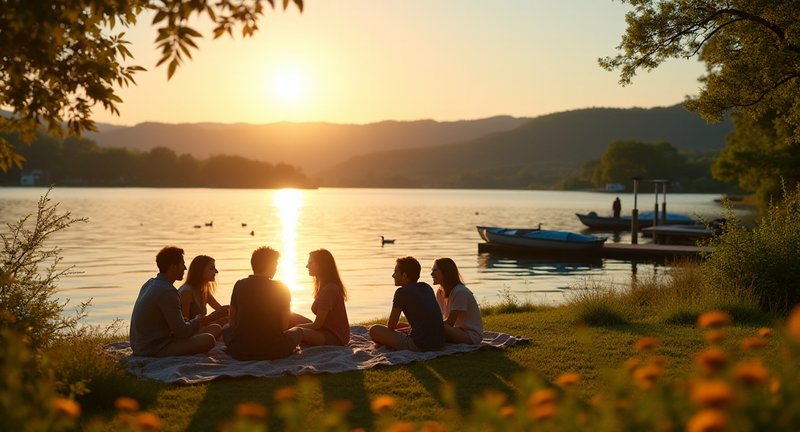
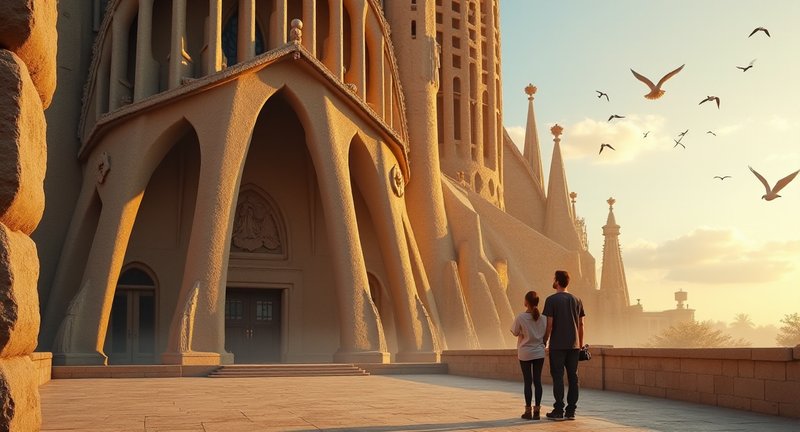
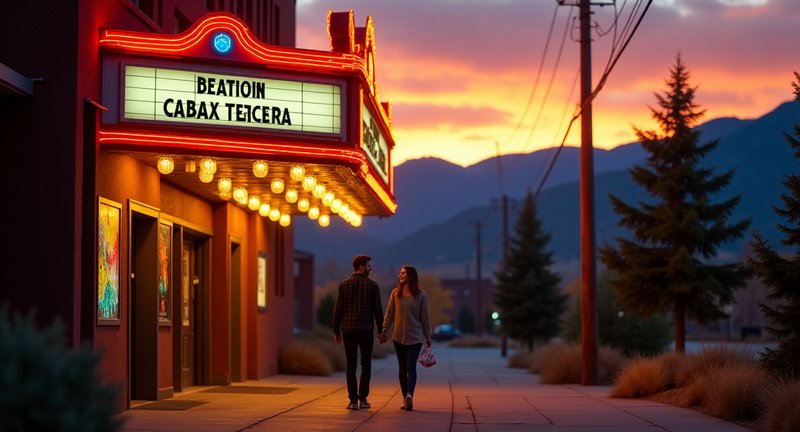
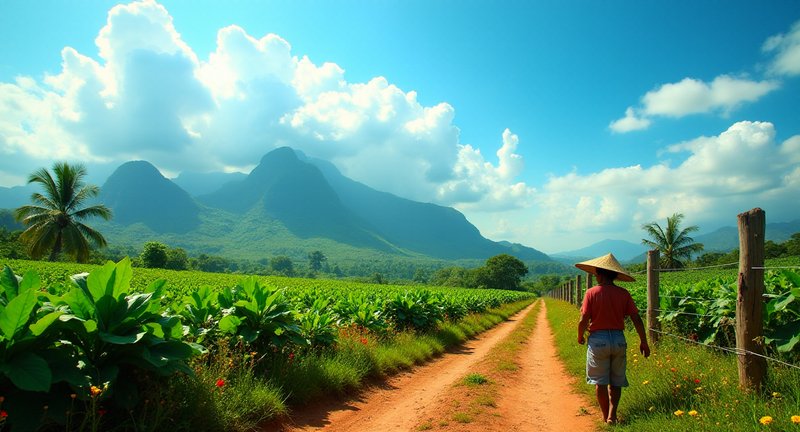
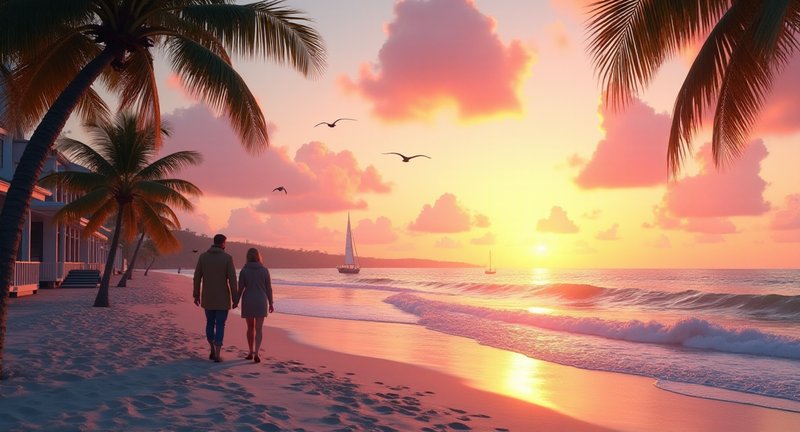
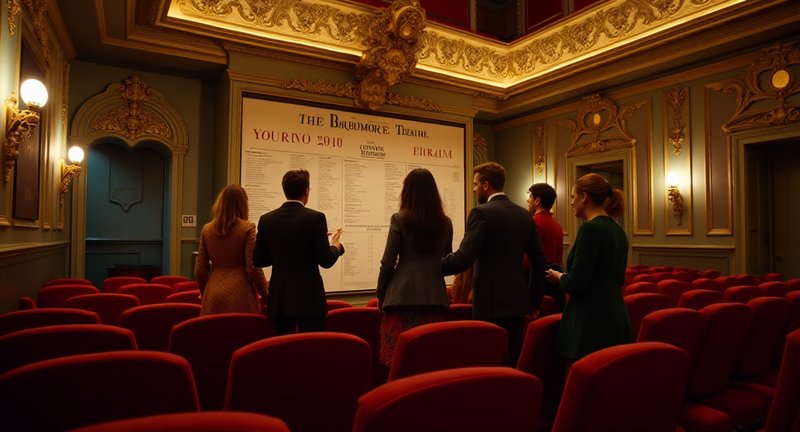
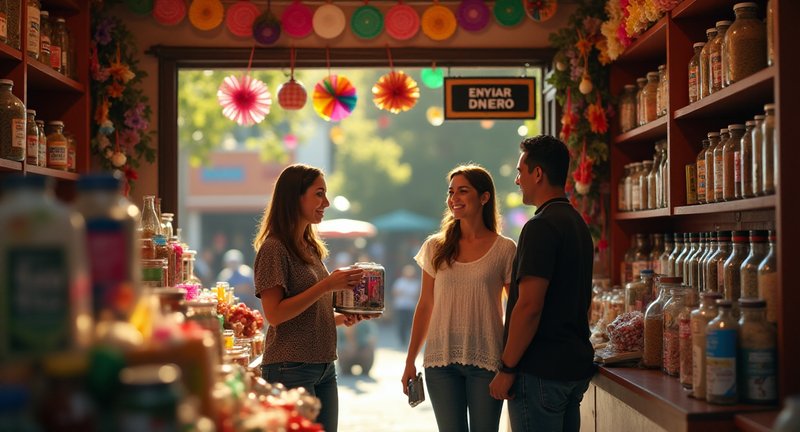
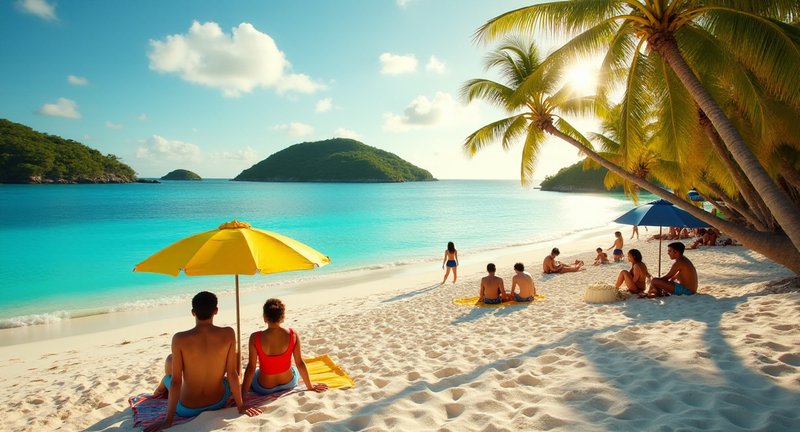
Wow, this really brings back memories of my own road trips through the mountains! You’re so right about the journey being just as special as the destination. I remember stopping in Hope for a quick coffee and being blown away by the views it’s such an underrated spot! Manning Provincial Park is also a nature lover’s paradise. I spent hours hiking the trails there, and every turn felt like stepping into another world. And Pemberton? Talk about a hidden gem! The farm-to-table dining is next level, and those mountain views are unforgettable. Yoho National Park is pure magic Emerald Lake is so breathtaking, I couldn’t stop staring. And Canmore, with its art scene and laid-back vibe, felt like the perfect place to end the trip. There’s something about those small towns that just makes you want to slow down and soak it all in. This post really captured the essence of an epic mountain adventure!
Oh man, I couldn’t agree more with the drive from Vancouver to Banff being a mind-blowing experience. I took that route last summer, and the Sea to Sky Highway was like driving straight into a postcard. Shannon Falls was stunning I stayed way longer than I planned just watching the water cascade. And Whistler, even in the off-season, is so vibrant. Pemberton Valley really surprised me too, with those sprawling farms against the backdrop of the Rockies. This trip is definitely one for the bucket list, especially with all these incredible stops!
Great tips on timing the Vancouver to Banff drive! I personally loved doing this trip in the fall. The autumn colors were absolutely breathtaking, and the cooler weather made all the outdoor stops so much more enjoyable. Plus, the roads were a lot less crowded compared to summer, which really added to the peacefulness of the whole experience. I think winter would be incredible too, especially for anyone who enjoys snow sports like skiing, but I’d definitely stick to fall if you’re more into hiking and sightseeing. Either way, the views are stunning year-round such an unforgettable drive!
This post takes me right back to my own road trip from Vancouver to Banff! Manning Provincial Park is a gem, isn’t it? I hiked through there and the wildflower meadows were just out of this world. It’s such a peaceful stop, and it really helps break up the drive with some nature therapy. And I’m so glad you mentioned Peyto Lake! I almost skipped it, but when I finally stood at that viewpoint, I couldn’t believe the turquoise color of the water. I took a thousand pictures and still don’t think I captured its true beauty. Also, you’re spot on with the poutine suggestion there’s just something about digging into a plate of cheesy, gravy-covered fries after a long day of exploring that hits differently!
I couldn’t agree more about the magic of a Vancouver to Banff road trip! I did this journey last year, and each stop felt like a chapter in an epic novel. Harrison Hot Springs was such a pleasant surprise for me – I had no idea how much I’d enjoy soaking in those warm waters surrounded by nature. And Yoho National Park? Absolutely stunning! I spent hours at Emerald Lake just soaking in the beauty. It’s funny you mention keeping an eye out for wildlife too I actually spotted a bear in the distance while driving through Coquihalla Pass! It’s an adventure that really makes you feel like you’re part of something bigger. If anyone’s on the fence about taking this trip, I say go for it you won’t regret a single mile!